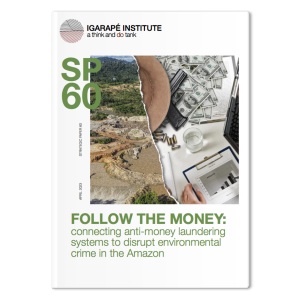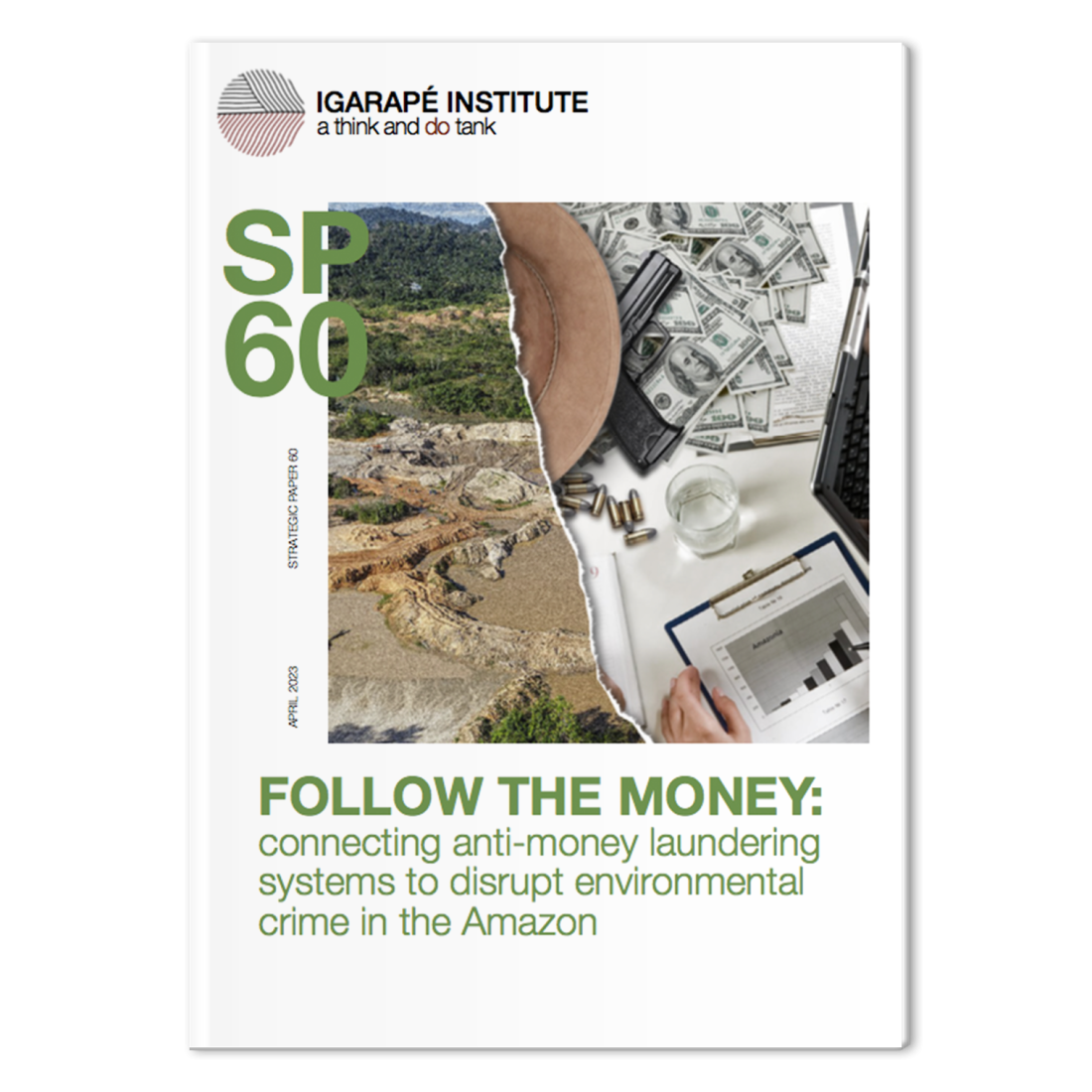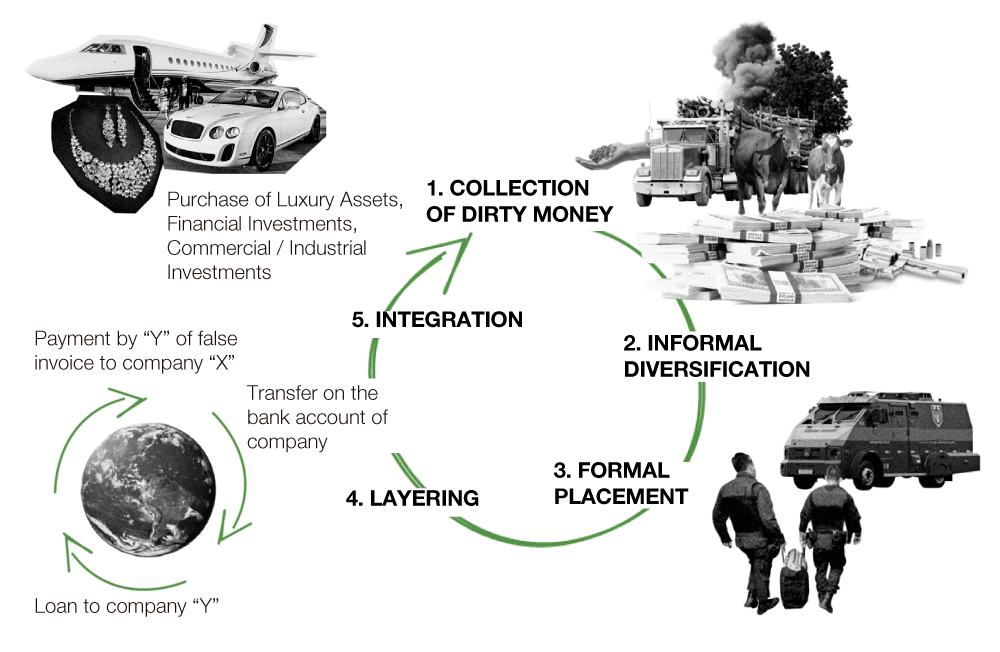Follow the money: connecting anti-money laundering systems to disrupt environmental crime in the Amazon
 Environmental crime became the world’s third most lucrative illicit economy after drug trafficking and smuggling, with estimates of $110 to $281 billion in annual profits. Between 2006 and 2016, environmental crimes grew at a rate of 5% to 7% per year, a pace two or three times faster than that of global GDP growth. Money laundering is part of the criminal machinery that plunders the Amazon Rainforest.
Environmental crime became the world’s third most lucrative illicit economy after drug trafficking and smuggling, with estimates of $110 to $281 billion in annual profits. Between 2006 and 2016, environmental crimes grew at a rate of 5% to 7% per year, a pace two or three times faster than that of global GDP growth. Money laundering is part of the criminal machinery that plunders the Amazon Rainforest.
The study “Follow the Money: connecting anti-money laundering systems to disrupt environmental crime in the amazon” reveals the need for systems, agencies, and institutions responsible for preventing money laundering to turn their attention to the connections between this illicit practice and environmental crimes.
The Igarapé study shows that the money laundering cycle follows three stages before the laundered funds can enter the financial system: placement, layering, and integration. However, not all proceeds from criminal activity are directly laundered into the formal financial system. Thus, informal diversification constitutes the process of moving illegal flows into the informal economy. It is estimated that 30% of the money to be laundered is used to pay the operating expenses of illicit economies. Cash transactions, divided into small amounts and deposited by “money mules,” are used to finance the hiring of precarious labor, accommodations, food, security, transportation, health services, leisure, and machinery, for example. The remaining 70% of illicit proceeds are formally inserted into the financial system.
The study also recalls that the World Bank estimated in 2019 that governments lose between 6 and 9 billion dollars in tax revenue each year due to illegal logging. Similarly, other environmental crimes such as illegal mining, especially of gold and diamonds, generate between 12 and 48 billion dollars in revenue. In 2018, Interpol’s Global Illicit Flows Atlas found that illegal logging accounted for a percentage between 15% and 30% of the global timber trade, calculated between 51 billion and 152 billion dollars per year. The illegal logging industry is responsible for up to 90% of deforestation of tropical forests in African countries such as the Democratic Republic of Congo.
Combating illicit financial flows is a powerful tool for dismantling illegal economies. It becomes even more relevant when it is identified that illicit financial flows fuel an ecosystem of environmental crime composed of a convergence of environmental and non-environmental crimes, such as corruption, fraud, tax evasion, and others.
Access the publication



